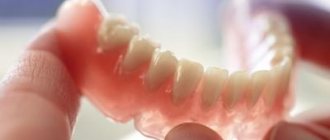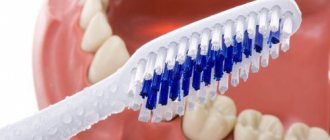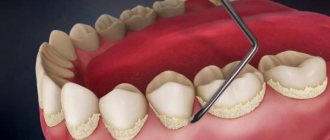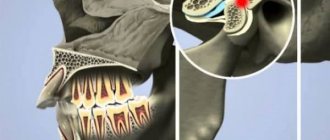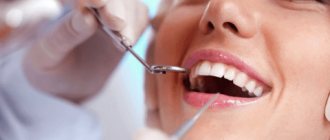An irrigator is a device designed for performing oral hygiene procedures. Its difference from other means is the removal of old plaque and dirt using water under pressure. This item is relevant for patients with braces and other permanent inserts who find it difficult to clean teeth in hard-to-reach places. If you are interested in purchasing an irrigator, you can find a large assortment of these devices at this link.
How to clean the inside of an irrigator
The hygiene product cannot be placed entirely in water, but it must be washed regularly from the inside. Pathogenic bacteria can accumulate in the reservoir, which at some point can penetrate the oral cavity and cause inflammation. Therefore, many device owners must keep the tank clean. In order for the device to serve for a long time and be safe, you need to carefully wash the inner surface with a gentle cleaning agent - soda, chlorhexedine or vinegar. It is necessary to carefully clean and rinse the inside of the tank after cleaning, and also take care of the external surfaces.
Causes of pollution
Deposits inside the irrigator form for several main reasons:
- Poor water quality. Limescale and scale appear in the device especially quickly when using tap liquid. But even filtered water contains a small amount of hard impurities. If not cleaned, the latter will lead to the formation of hard deposits in the reservoir and on the nozzles of the device.
- Constantly increased humidity inside the device. If you do not clean and dry the irrigator after each use, then over time mold may form on its walls in hard-to-reach places. Fungus appears especially often if plain water or herbal infusions are used for oral care, rather than special antiseptic liquids.
- Poor quality cleaning products for teeth and gums. Herbal decoctions prepared at home and cheap antibacterial solutions are poorly washed out of the internal parts of the irrigator and remain on its walls. Over time, a dense coating begins to form, which can only be removed by special cleaning.
Rules for caring for an irrigator at home recommend thoroughly rinsing the device after each use and regularly disinfecting the nozzles.
Is it possible to clean mold from an irrigator?
It is simply necessary to clean the surface of fungus, since this type of contamination can cause irreparable harm to a person during use. Cleaning can be done using baking soda, peroxide and table vinegar. The advantages of such products are not only their low cost, but also their functionality - they cope well with mold without harming the device. You need to clean the irrigator from the outside and inside - you need to thoroughly wipe the outer surface with a sponge soaked in the substance, then wipe with a brush all hard-to-reach places and joints of elements.
It is imperative to wash the inside of the device, as otherwise mold may enter the human body. It is necessary to make a solution of soda, vinegar, or antiseptic, turn on the device, place the handle in the sink or bathtub and thus rinse the surface several times, first with a cleaning agent, then with water. In some cases, complete disassembly of the device is necessary if mold has completely affected the surface.
Why do you need to clean your irrigator?
During use, the irrigator for teeth and gums is constantly in contact with water, chemicals and herbal compounds. Sooner or later, hard deposits, plaque, and in some cases mold appear on its internal surfaces.
If you do not regularly clean the device, the stream pressure in the irrigator will quickly weaken. When scale accumulates on metal parts, the unit will begin to overheat and eventually simply burn out.
Plaque particles accumulated in the irrigator can enter the mouth along with the liquid and cause inflammation
Cleaning the WaterPik irrigator
Cleaning the device is somewhat different from washing regular dishes. Since the device is electric, it cannot be completely immersed in liquid. If necessary, you can disassemble the item into parts and wash each part separately. If the contamination is minor, just fill the tank with warm water to the maximum mark, lower the spout into the bathtub or sink and turn on the device, wait until all the water drains out. If the contamination is serious, such as mold or scale, you need to add special cleaning agents and disinfectants, then remember to rinse with clean water.
Unconventional methods
I found interesting information on the Internet that carbonated drinks (such as Coca-Cola, Pepsi or Sprite) are another option for cleaning the irrigator from scale. Reviews claim that the effect is stunning. I don't think I'll try this myself. If the scale is cleared, then you will have to wash the device from Sprite, so as not to brush your teeth with sugar-containing liquids. Somehow I don’t trust such harmful drinks to take care of such a useful irrigator. In addition, citric acid and vinegar are cheaper and more convenient.
Stages of cleaning an irrigator with vinegar
Vinegar is one of the cheap products that will thoroughly clean the surface of the irrigator without harming it. Despite the fact that this substance smells unpleasant, a strong aroma remains for some time, it is one of the safest substances for humans when used correctly. To clean a contaminated surface, soak a sponge or rag in vinegar and wipe the tank and surfaces clean. When working, you should wear gloves only, protecting your respiratory organs. Vinegar is used to combat fungi that are dangerous to human health. It is necessary to start fighting mold in the irrigator - using such an item is unacceptable, harmful bacteria can enter the oral cavity and cause various diseases. Author of the article: Vsevolod Bobrenkov (stommarket.ru)
Precautions when using the irrigator
Although the developers of Waterpik irrigators have included in the design all the necessary elements to protect against possible electric shock and ensure maximum safety, we still recommend paying attention to some points and be sure to explain them to children. Basically, the safety precautions for using electrical devices are the same:
- Do not touch the charger with wet hands.
- Do not immerse a live device in water or any other liquid.
- Carefully monitor the condition of the cord - mechanical damage and exposed wires are not allowed.
- Do not use while in the bath or shower unless directed to do so.
- Store it only in places from which it cannot accidentally get into the aquatic environment.
- Do not try to immediately get the waterpik if it falls into the water. Be sure to unplug it first.
- Do not throw the device, keep it away from heating devices.
Do not use mouthwashes containing iodine or bleaching solutions. For effective cleaning, use a special cleaning agent for the irrigator.
Call us and get advice on how to properly and comfortably care for your teeth and oral cavity!
Author of the article
What will you need for this?
Cleaning an irrigator at home begins with choosing the products that can be used during the work process. All of them are divided into specialized chemicals and safe compounds available in every housewife’s kitchen. Each of these options deserves special attention.
Available means
In the fight against scale and mold on the internal surfaces of the irrigator, well-known substances are used.
- Vinegar. It helps to disinfect metal elements and effectively destroys mold and mildew. For rinsing, use a solution of 7% vinegar in a volume of 100 and 400 ml of water.
- Lemon acid. The best home remedy for scale. You can use a concentrate of lemon juice and 500 ml of water, or dissolve 25 g of a powdered substance used in cooking in the same volume of liquid.
- Baking soda. Another descaling agent that has an additional disinfectant effect. 1 tablespoon of powder is dissolved in 0.5 liters of water.
You should not follow recommendations that suggest pouring sweet carbonated water inside the device. Such a composition will lead to failure of the irrigator.
Special solutions
Specialized products for cleaning irrigators can be purchased at medical equipment stores and pharmacies. The most popular are formulations from the brands Revyline and Doctor Elephant. The products effectively fight scale and prevent engine overheating.
For disinfection, you can use medical solutions: chlorhexidine, hydrogen peroxide.
Which one is better to choose?
When choosing an irrigator, you need to pay attention to a number of nuances.
An important aspect is the equipment: the number of nozzles and the presence of special nozzles. An important aspect is the equipment: the number of nozzles and the presence of special nozzles.
You need to choose a device depending on the indications.
For simple cleaning, standard models are suitable; for cleaning orthodontic structures, it is best to give preference to devices with special attachments.
The volume of the reservoir is selected depending on how long the patient spends cleaning the oral cavity.
For convenience, you can take a model with adjustable jet power.
It is desirable that the irrigator has the ability to switch from intensive cleaning to more gentle cleaning. This nuance is especially important for people with sensitive gums.
He will help you choose the optimal set of attachments and cleaning fluid.
How to use the device correctly
Before brushing your teeth with this device, it is better to consult your dentist.
The specialist will suggest the optimal mode of operation for your case, and will also identify problem areas that need to be paid special attention to: sensitivity of enamel and gums, tendency to inflammatory processes, hard-to-reach areas where large amounts of bacteria and food debris accumulate. The following are the basic principles for using the device:
- It is better to start cleaning with a small pressure, gradually increasing it,
- the working area of the nozzle should move from the edge of the gum down along the surface of the tooth, at an inclination of approximately 60-90 degrees - this will help avoid unnecessary trauma to the mucous membrane,
- the optimal duration of the procedure is 2-3 minutes,
- first you should treat all easily accessible surfaces and only then you can move on to problem areas,
- safe frequency of use for preventive purposes - every day, at least 1-2 times, more often if possible,
- do not stop daily double brushing with a brush and paste,
- Refilling the reservoir with antiseptic agents is only possible in consultation with a doctor during the active phase of gum disease. In general, it is more than enough to use ordinary water.
The optimal duration of the procedure is 2-3 minutes
Today, the market offers a wide variety of different models of irrigators: stationary and portable, for personal use or for the whole family, with different numbers of nozzles and different operating modes. Before purchasing, you should carefully study the assortment, determine your main criteria and choose the best option.
General rules
Before you start using the irrigator, you should remember several universal rules for operating this device:
- Choose an attachment that suits you personally, taking into account the presence of additional structures in the oral cavity (braces, crowns), and also corresponds to your chosen purpose of use. The standard package of a stationary irrigator includes from 4 to 40 attachments, a portable one - from 1 to 4. Among them, there are separate attachments for removing plaque, cleaning the tongue and attachments that will help clean teeth under braces. In addition to those included in the set, you can always purchase additional attachments. Therefore, the choice is unlimited.
- Daily dental hygiene. Even if you bought a waterpik, you should not forget about everyday hygiene. Brush your teeth with a brush and toothpaste every day and before using an irrigator. The brush will help clean the surface of the teeth from food debris, and the irrigator will help remove remaining plaque and disinfect the oral cavity in hard-to-reach places (for example, the gaps between the teeth). In addition, it helps to wash away toothpaste residues.
- It is best to use the irrigator in the evening, before bedtime. By the end of the day, a large amount of plaque accumulates on the teeth, which must be removed.
- Doctors advise choosing devices that have the ability to regulate the pressure on the surface of the teeth. In this case, you will be able to select the optimal method of influence for you.
- Select the appropriate mode. Depending on the purpose of cleaning and the type of teeth, you can choose an individual cleansing regimen. The gentle cleaning regime is suitable for sensitive teeth. To tidy up your gums, select the massaging mode. The bleaching and polishing mode will help remove plaque.
During the first use, make sure that the mode is gentle and the pressure on the teeth and gums is minimal. As you adapt, you can increase the pressure.
- Point the device correctly. Always direct the fluid from the irrigator at a right angle to the tooth being cleaned. This will prevent the liquid pressure from reaching your gums. At the same time, keep your head slightly tilted so that the liquid can flow freely from your mouth.
- Lift your tongue up before using it. This prevents fluid from entering the airways. If fluid gets into the lungs, it can lead to the development of diseases.
- Cleaning time should not exceed 15 minutes. Over time, useful minerals, which are responsible for their strength and health, begin to be washed out of the teeth. However, you should not spend more than 5 minutes on one zone.
- Each family member should have a separate nozzle for the irrigator. You can mark it with a special color marker. This is necessary in order to avoid the transmission of infections and harmful bacteria.
- Change the head every 3 months, just like your toothbrush. After long use, a large number of invisible microorganisms accumulate on the nozzle, which can provoke the development of infections inside the oral cavity.
- It is not recommended to use the irrigator for preschool children. Since their teeth are not yet strong enough, this can damage the enamel and destroy dentin. Children over 6 years old can use the device under adult supervision. But for children, it is always necessary to use a gentle low-pressure irrigator mode.
In addition to the recommendations given, be sure to read the instructions for use of the irrigator immediately after purchase, since each device has its own individual characteristics.
Only by carefully following all these rules will you be able to use the irrigator as efficiently as possible and without harm to your teeth.
How to care for the device so that it lasts as long as possible
Daily brushing of teeth in the morning and evening is not enough for high-quality prevention of caries and other dental diseases. Experts also recommend using antiseptic rinses, dental floss and irrigator. The latter is a device that delivers a high-pressure water jet to effectively clean hard-to-reach areas.
As a rule, oral hygiene using an irrigator involves the use of tinctures of medicinal herbs and special medical solutions. In such cases, the device requires rinsing and cleaning after each use. To do this, you need to fill the device halfway with warm water and pour it through the spout into the sink, then rinse the irrigator under running water.
Like any other electrical device, an oral irrigator requires careful and proper handling. If used correctly and all safety rules are followed, it will serve your family for many years.
Be sure to rinse the new irrigator with warm water before use. After use, drain the remaining liquid, wipe the device with a napkin or towel and put it in a dry place. The attachments must be stored in the storage compartment or in a special holder.
The device must be washed 1-2 times a month when using water and every week when using solutions. The attachments should be washed at the same frequency or more often, if possible changing them after 3-4 months. Washing is carried out with warm boiled water. You can use a sponge to clean dirty parts.
Attempt to repair and replace the handle of the Nicefeel FC168 irrigator
Product. Almost four years ago I bought a purebred Chinese irrigator Nicefeel FC168 and for about two years everything was fine with it, then for some reason I abandoned it, and when I took it out again (about a year ago), problems began with the handle. It began to leak. Both during use and, more sadly, in a standby, so to speak, which led to puddles under the device when I forgot to drain the excess water. To make matters worse, the pressure almost disappeared. And, of course, something had to be done about this, since the irrigator really proved its benefits. Since they say from every iron that the Russians do not give up, the first thing I decided was not to give up, but to disassemble the original handle to detect a malfunction. Based on the fact that the handle was leaking, I was hoping to find a loose hose or something like that there and quickly eliminate the leak using improvised means, even with a silicone tube for an aquarium.
Here, from the location of the plaque, it is clear that the leak was coming from the handle, and not from the irrigator itself:
Not so. The Chinese don't give up easily either. The handle, which did not seem very strong, in fact flatly refused to understand it. Studying our YouTube literally showed that there really is a squiggle: the halves of the handle are simply glued together and it is almost impossible to disassemble this structure non-destructively. There was something else. Please note that the handle has two springs: for the nozzle lock and the water shut-off button. It’s okay to lose the second one, but it’s better not to lose the first one, because without it the nozzle won’t hold on.
These are the springs:
And the complete set in parts:
In general, armed with new knowledge, I quite successfully unscrewed the handle only to discover that everything was in perfect order with the hose.
The victim after the repair attempt:
Since I was discouraged, I also disassembled the irrigator itself. The inside, by the way, is quite nice and clean - the leak was clearly not there. As you can see, searching for the fault turned out to be fruitless, so I finally decided to order a new handle. I couldn’t find a handle specifically for my irrigator, but I found a bunch of outwardly identical handles, some of which were stated to be compatible with an irrigator similar to mine and some others. Using these same “some others”, I looked for a suitable pen with the lowest price, ordered it and began to wait.
By the end of the second month of waiting, I had almost lost hope that I would get what I wanted, so I decided to dig into the faulty pen again to see what I might see. And saw. I won’t say one hundred percent that this was the problem, but it seems that all the troubles literally stemmed from a faulty o-ring that should seal the joint between the handle and the nozzle.
Ring in depth:
The ring is kind of tricky; its profile is not cylindrical, but U-shaped. Plus it is also concentric:
The ring in my pen had either worn out or lost its properties because I had not used the irrigator for quite a long time. Since I was almost sure that this was the reason for the water leakage, to test the hypothesis I made an analogue of the gasket from (it seems) the nozzle on the piston of a medical syringe. I cut out something like a washer and punched it into the skin. Since the characteristics of the new gasket did not exactly match the original, it was not very easy to assemble the handle. In addition, the nozzle became much more difficult to insert and remove, and it became more difficult to rotate.
But the irrigator stopped leaking and finally began to produce normal pressure. So now I could more or less calmly wait for the new pen, which was still in no hurry to arrive. The hysteria in messages to the seller did not give anything, they answered philosophically in the style of “Dear friend, according to our information, the pen is almost ....”
I won’t tempt you, the pen ordered on January 11th arrived on April 1st. Well, around the same time I began to attach it to the irrigator.
There is nothing exclusive about the pen: the plastic and hose look exactly the same as the original pen. There are two cardinal differences:
1) The new handle did not have a locking ring at the point of attachment to the joint with I don’t even know what to call it, the mounting unit on the irrigator pipe, or something.
2) The new handle does not fit on the irrigator stand.
Old and new:
But these are probably minor things compared to the fact that the handle fits into place normally. True, there are peculiarities. With the new handle, the water consumption has become two times less, although I can’t say that the outer diameter of the tubes is somehow significantly different: the old one is 4 mm, the new one is 3.7 - 3.8 mm. In length, as far as I could stretch, they are also identical. True, the new tube is somewhat softer, although I am inclined to think that the reason is due to age - the old one has simply become stiff from time to time.
The attachments from Nicefeel FC168 also fit the new handle. They lock with a click and rotate, although they do not “eject” when changing, as was the case with the original handle - you need to remove it with a little force. Another minus is that the pump’s operation is much better felt on the new handle; the nozzles knock on the teeth much more noticeably.
To sum it up, if it is impossible to find an original pen or its price is astronomical, you can take it. Not from my salesman, who is extremely sadly slow.
When to use an irrigator and when not to
The irrigator is especially effective for people with orthodontic systems (for example, braces), stationary dentures, problems with interdental intervals, gum pockets, as well as those who have wounds and inflammatory processes in the oral cavity. This device is great for preventing dental diseases. To protect against caries, you can use solutions of fluoride and calcium. The device copes with dark deposits from coffee and tobacco.
However, there are situations in which the use of an irrigator is contraindicated. In particular, in acute dental diseases, more delicate methods of teeth cleaning are needed. Also, without additional consultation with a doctor, you should not use the irrigator during an acute period of cardiovascular problems, after surgical interventions in the oral cavity, as well as in cases of high sensitivity of teeth and bleeding gums. For children under 6-7 years old, the irrigator is suitable only with low pressure of the working jet.
